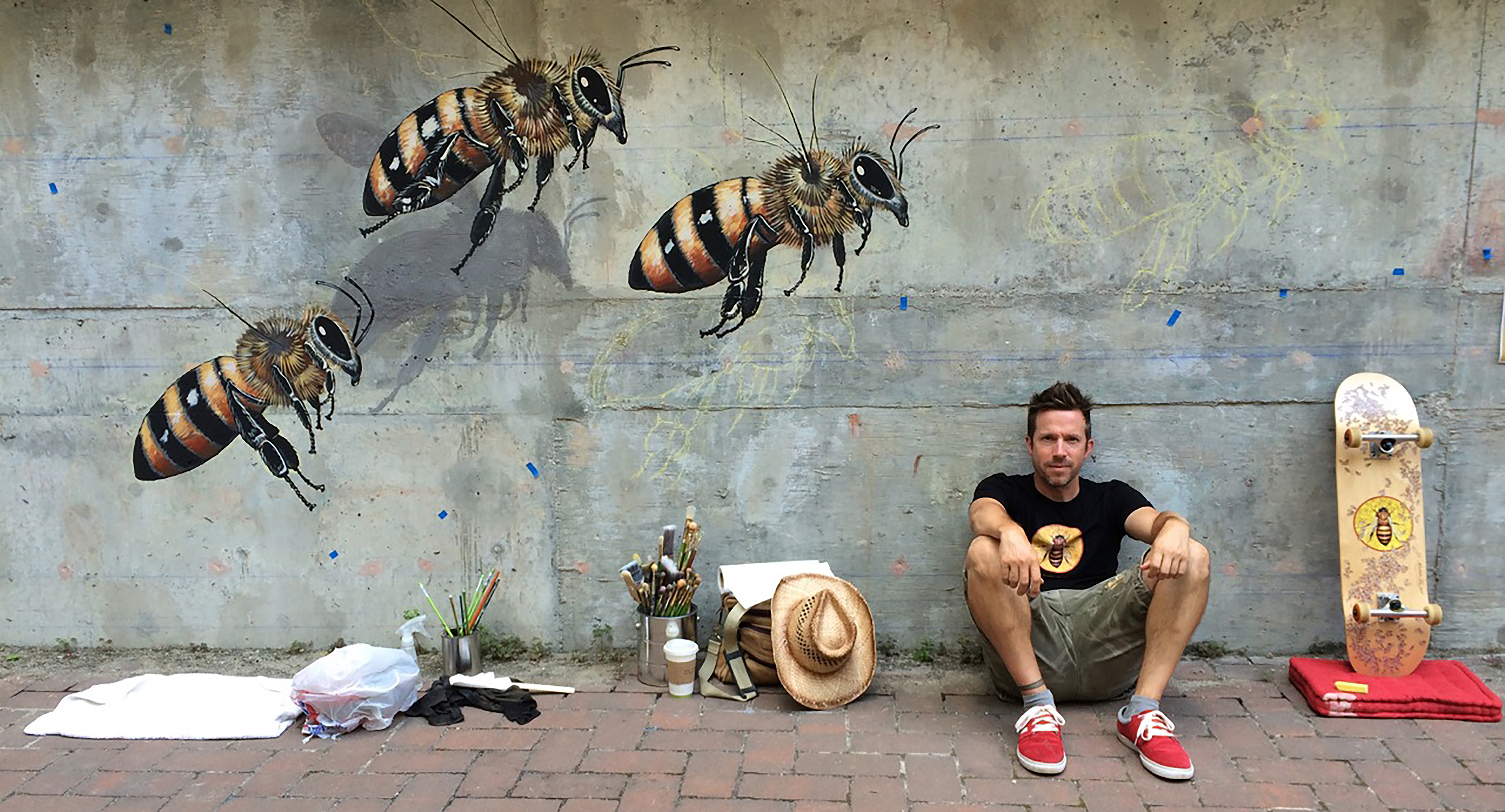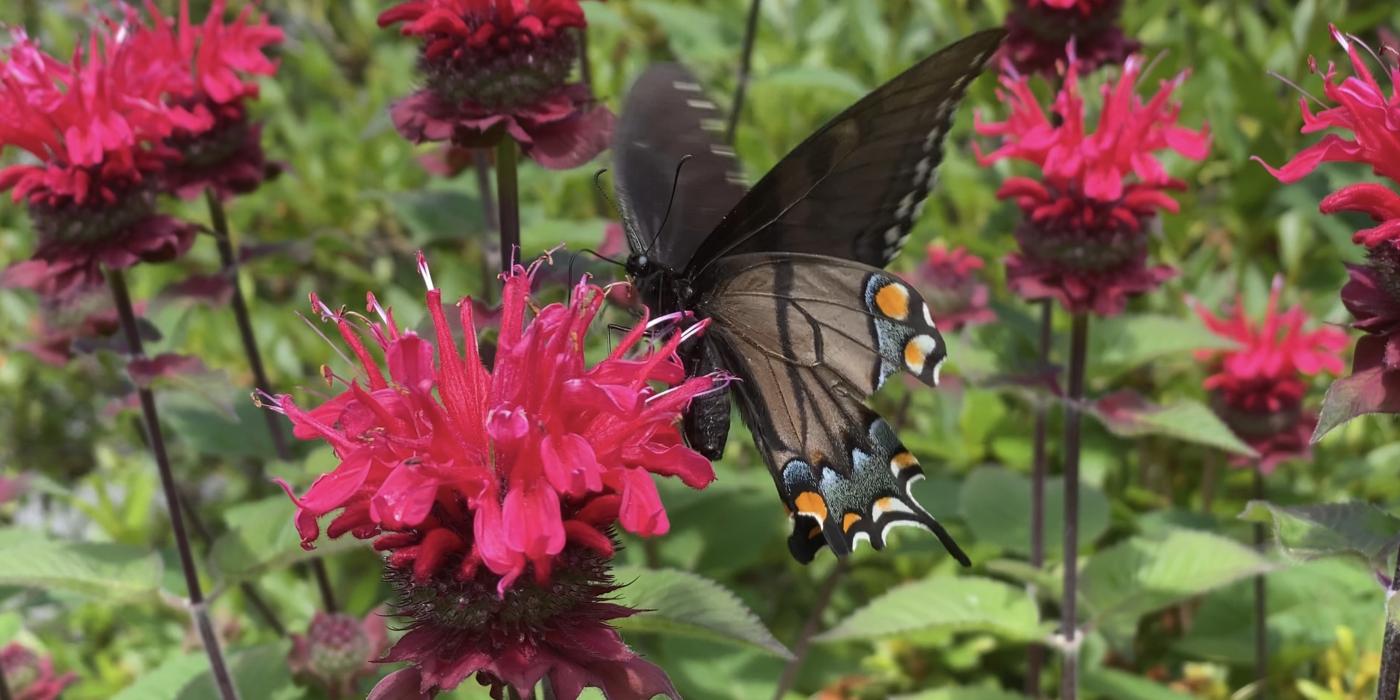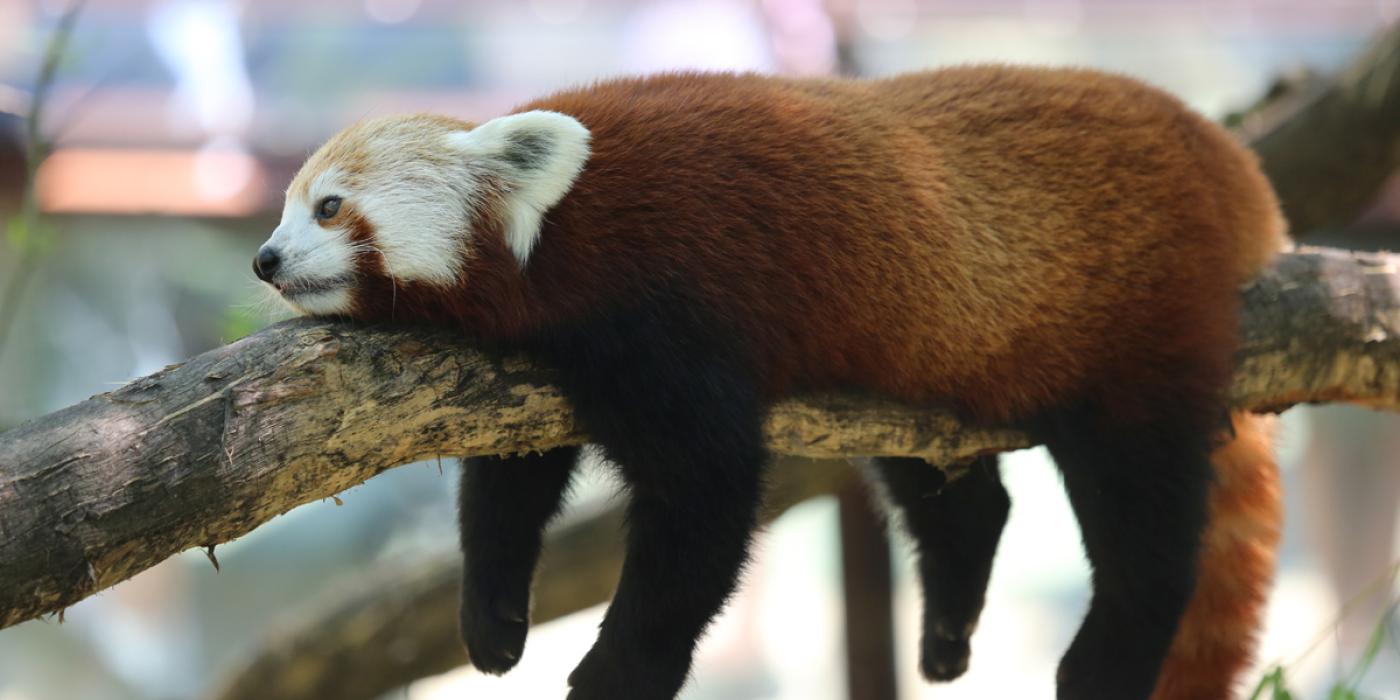Pollinator Public Art Initiative Takes Flight at the Smithsonian’s National Zoo
The façade of the Great Ape House at the Smithsonian’s National Zoo is getting a “bee-autiful” makeover—one that visitors will be buzzing about for years to come. Beginning today, Sept. 17, artist Matthew Willey will put paint to the popular primate exhibit, creating a larger-than-life swarm of honeybees to highlight the importance of pollinator conservation. Two of Willey’s art installations—“Bending Hives” and “Colony Expanse”—are also on display near the Zoo’s Kids’ Farm and Zoo in Your Backyard exhibits, respectively.
Starting Sept. 22, Zoo visitors will be able to watch Willey at work and chat with the artist on Saturdays and Tuesdays at 10 a.m. and 2 p.m. Once completed in mid-November, the finished piece will exist as a part of Willey’s growing series of murals created through his initiative, The Good of the Hive, which strives to raise awareness about the importance of honeybees and other pollinators while celebrating the beauty and power of nature and human connection. Willey has made a personal commitment to hand-paint 50,000 honeybees—the number necessary for a healthy, thriving hive—in murals around the world.
“Making the connection between honeybees and great apes at the Smithsonian’s National Zoo has the ability to punctuate the connectedness of all life on our planet,” Willey said. “A swarm is the expansion of a healthy, thriving hive and one of the most sublime experiences in the natural world. By presenting these animals in a whole new light, I hope my art causes visitors to share in my wonder and awe of these magical creatures and inspires them to take action to conserve and protect all species great and small.”
On view near the Kids’ Farm is “Bending Hives,” a permanent art installation by Willey designed to spark curiosity and imagination. Four curved beehive sculptures made of wood and metal invite the viewer to look closer, with different perspectives, at the world humans share with bees.
A second temporary art-installation piece titled “Colony Expanse” is located at Zoo in Your Backyard. Capturing the surprise and elegance of a honeybee swarm, this kinetic piece features 193 individual bees painted on 12-by-18-inch boards, which are wired together and represent colony movement. Exposure to the elements causes the gold-painted wood boards to deteriorate, exemplifying the difficulties bees face from changes to the environment. “Colony Expanse” will be on view at the Zoo through Nov. 15.
“We’re so proud to collaborate with artist Matthew Willey to tell the story of pollinator conservation through art,” said Pamela Baker-Masson, associate director of Communications, Exhibits and Planning. “One of the Zoo’s primary responsibilities is to inspire our visitors to care about species and think about them in new and different ways. It’s a perfect time of year to enjoy the park and watch Matthew’s mural come to life and experience the beauty of bees through these fun and thought-provoking installations.”
Nearly 70 percent of all flowering plants reproduce via pollination by bees and other pollinators. About one-third of the human food supply—including chocolate, coffee, fruits and almonds—depends on insect pollination, most of which is accomplished by bees. To communicate with their colonies about where to find flowers and collect pollen, honeybees signal to one another using pheromones and dance-like movements known as a waggle dance.
In the 1970s, honeybee colonies in the United States numbered more than 4 million; today, only about 2.5 million colonies remain due to a mysterious phenomenon known as Colony Collapse Disorder. While scientists do not know a definitive cause for this alarming population decline, current risks facing honeybees and our native bees include habitat loss and fragmentation, climate change, pesticides and introduced disease. Additional research will help scientists understand which species are most susceptible to these threats and where conservation efforts will be most beneficial. The status of many species of native bees is unknown.
The Smithsonian Conservation Biology Institute’s Virginia Working Landscapes (VWL) conducts biodiversity surveys to understand the relationships between birds, plants and pollinators in the Washington, D.C. region and to identify the various habitats they depend on. One of VWL’s most exciting finds was a rusty patched bumblebee in 2014—a species that is classified as endangered by the U.S. Fish and Wildlife Service. It is the first bee in the continental U.S. listed under the Endangered Species Act.
Willey has been painting murals for 25 years. Recent installations from Willey’s The Good of the Hive initiative include Dag Hammarskjold Plaza outside of the United Nations in New York City, Janney Elementary in Washington, D.C., North Carolina Museum of Natural Sciences and Burt’s Bees headquarters, among others. With a deep background in design and scenic artistry, Willey received a Bachelor of Fine Arts from the School of the Museum of Fine Arts, Boston and Tufts University in 1993. The formal muralist for the Washington Wizards, his work has been featured in Veranda magazine (cover), Interior Design magazine and the home sections of the New York Times and Washington Post.
For information about Willey’s mural at the Great Ape House and his “Bending Hives” and “Colony Expanse” art installations, visit the Zoo’s website. Follow the Zoo on Facebook, Twitter and Instagram for the latest updates about exhibits, amenities and animal news.
# # #
Photo credit: Matthew Willey



